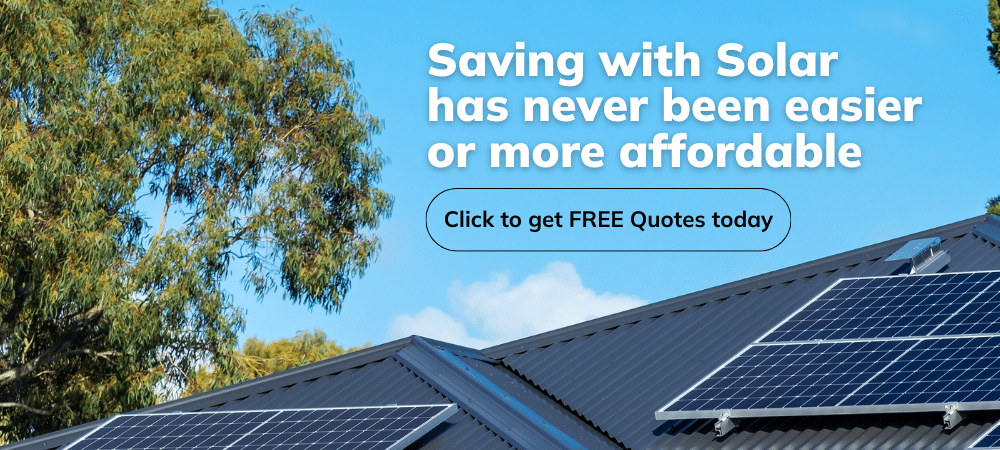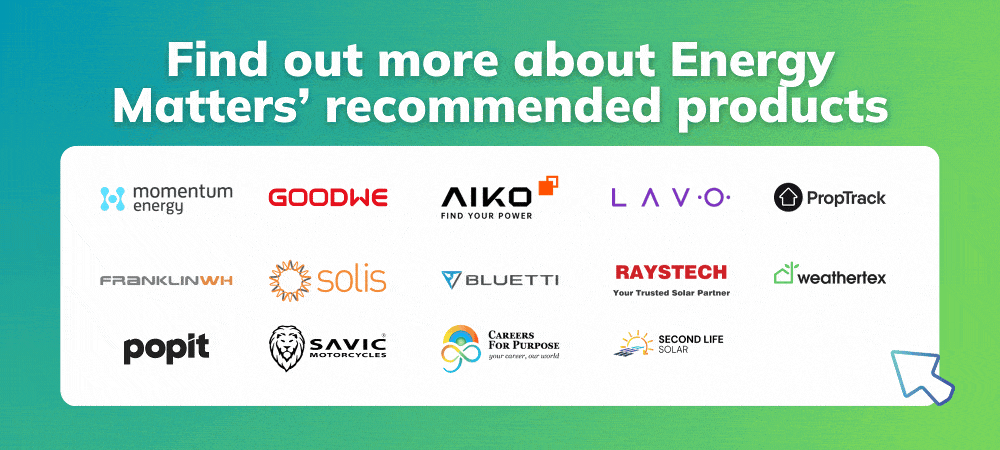Australia is embracing the electric vehicle (EV) revolution, and with more EVs hitting our roads, understanding how EV chargers work is becoming increasingly vital. This comprehensive guide will delve into the intricacies of electric car charging systems in Australia, explaining the EV charging process, the different types of chargers available, and key considerations for EV owners. Empower yourself with knowledge and join the electric future today!
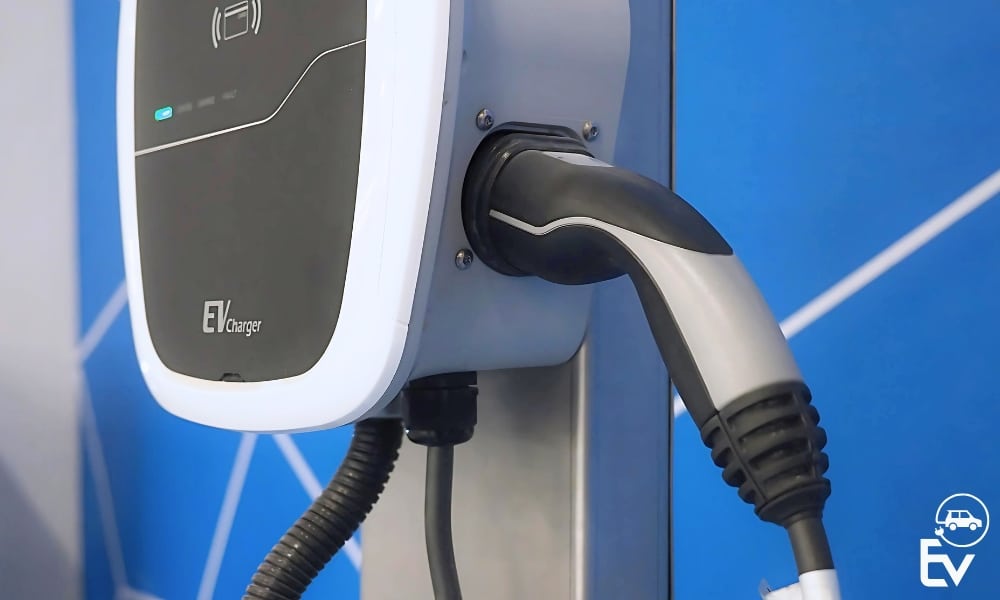
On this page
The fundamentals of electric car charging systems
At its core, an EV charger transfers electricity from the grid to your vehicle’s battery, similar to a smartphone. This process is managed by the electric car charging systems, which include the charging station (also known as an Electric Vehicle Supply Equipment or EVSE) and the onboard charger within the EV itself.
The charging station regulates the flow of electricity, ensuring it’s delivered safely and efficiently to the car. The onboard charger then converts the AC power from the grid into DC power suitable for storing in the EV’s battery.
The process involves various components and considerations to ensure efficient and safe charging. Understanding these components is essential to grasping how EV chargers work and making informed decisions about charging options.
Powering up your EV with solar
If you plan to purchase an EV, integrating an EV charger into your solar system is a great way to “fuel” your car with clean, renewable energy.
Key components of EV chargers
- Charging station (EVSE): The hardware that delivers electrical energy to the vehicle.
- Connector/Plug: The interface between the charging station and the vehicle.
- Onboard charger: Located within the vehicle, it converts AC power to DC power, suitable for a solar battery storage system.
Use Energy Matters’ easy-to-use solar power and battery storage calculator to determine the size of your solar system with storage! Our solar calculator will generate performance information and potential savings.
We can send this information to 3 of our pre-vetted and trusted local installers in your area to receive obligation-free solar quotes.
The EV charging process explained can be broken down into several key stages:
- Connection: The EV owner connects a charging cable from the charging station to their vehicle’s charging port.
- Communication: The EV and the charging station communicate to establish the charging parameters, such as the maximum current the vehicle can accept and the charging rate offered by the station.
- Power delivery: Once the communication is established, the charging station supplies electrical power to the EV.
- Conversion (AC to DC): For AC charging, the EV’s onboard charger converts the alternating current (AC) from the grid into direct current (DC) needed to charge the battery. DC fast chargers bypass the onboard charger and deliver DC power directly to the battery.
- Battery management: The EV’s Battery Management System (BMS) monitors the battery’s charge, voltage, and temperature throughout the charging process, ensuring safe and optimal charging.
- Completion: The charging process stops once the battery reaches the desired charge level.
Did you know Energy Matters is Australia’s largest renewable news, blog and educational resource? Subscribe to Energy Matters’ weekly newsletter and keep updated even with incentives, rebates and recommended solar product offers.
Types of EV chargers in Australia
Australia utilises different levels and types of electric car charging systems, each with varying charging speeds and applications. Understanding these distinctions is crucial for EV owners.
AC Charging: Level 1 and Level 2
AC charging is the most common type suitable for home, workplace, and public charging stations.
- Level 1 chargers are the slowest form of charging, typically using a standard household power outlet (230V, 10A). They provide around 6-10 kilometres of range per hour of charging. Level 1 charging is often used to top off the battery overnight at home.
- Level 2 chargers, also called wallbox chargers, utilise a dedicated charging station and a higher voltage (typically 230V, 16A, or 32A), significantly increasing charging speeds. Level 2 chargers can add around 20 to 40 kilometres of range per hour. These are commonly found in homes, workplaces, shopping centres, and public parking areas. Many Australian homes with solar power installations opt for Level 2 chargers to maximise their renewable energy usage for charging.
DC fast charging: Rapid replenishment
DC fast charging offers the quickest EV charge, making it ideal for long journeys and public charging along highways.
- Level 3/DC fast chargers: These powerful chargers bypass the EV’s onboard charger and deliver DC power directly to the battery at high power levels (typically 50kW or more). Depending on the car’s battery capacity and the charger’s power output, they can add significant range in a relatively short time, often providing 100-300 kilometres in about 30-60 minutes. Ultra-fast chargers with power outputs of 150kW and even 350kW are also being deployed in Australia, further reducing charging times.
Understanding charging connectors in Australia
While some older EVs or specific models might have different connectors, the Australian charging infrastructure is largely standardised around Type 2 and CCS2.
- Type 1: This standard AC plug, sometimes called J1772 or SAE J1772, is found on Mitsubishi Outlander Plug-In Hybrid Electric Vehicles (PHEVs) manufactured before 2019 in Australia, North America, and Japan.
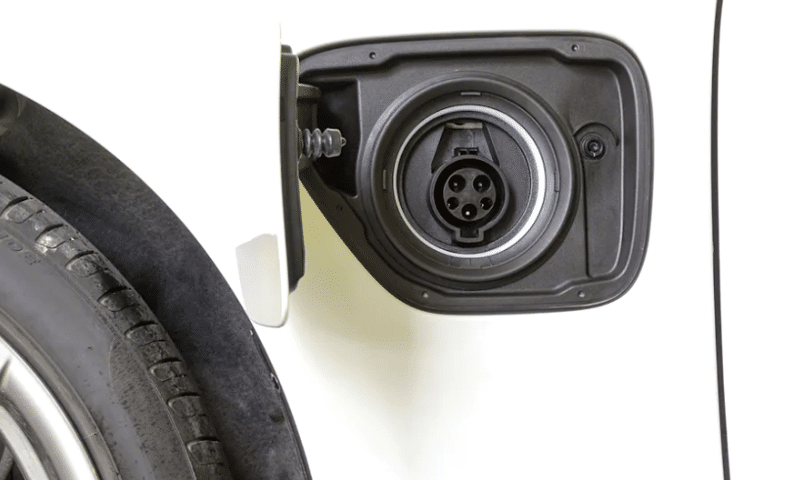
Australia primarily uses two types of connectors for EV charging:
- Type 2 (Mennekes): This is the standard connector for AC charging in Australia and is used for both Level 1 (via an adapter) and Level 2 charging. Most public AC charging stations and home chargers in Australia feature Type 2 sockets.
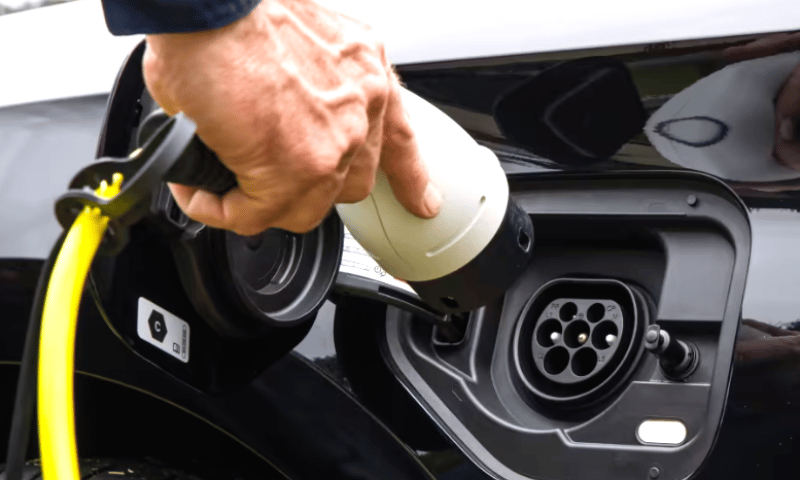
CCS2 (Combined Charging System): Australia’s dominant connector for DC fast charging. It combines the Type 2 AC connector with two additional DC pins, allowing AC and rapid DC charging.
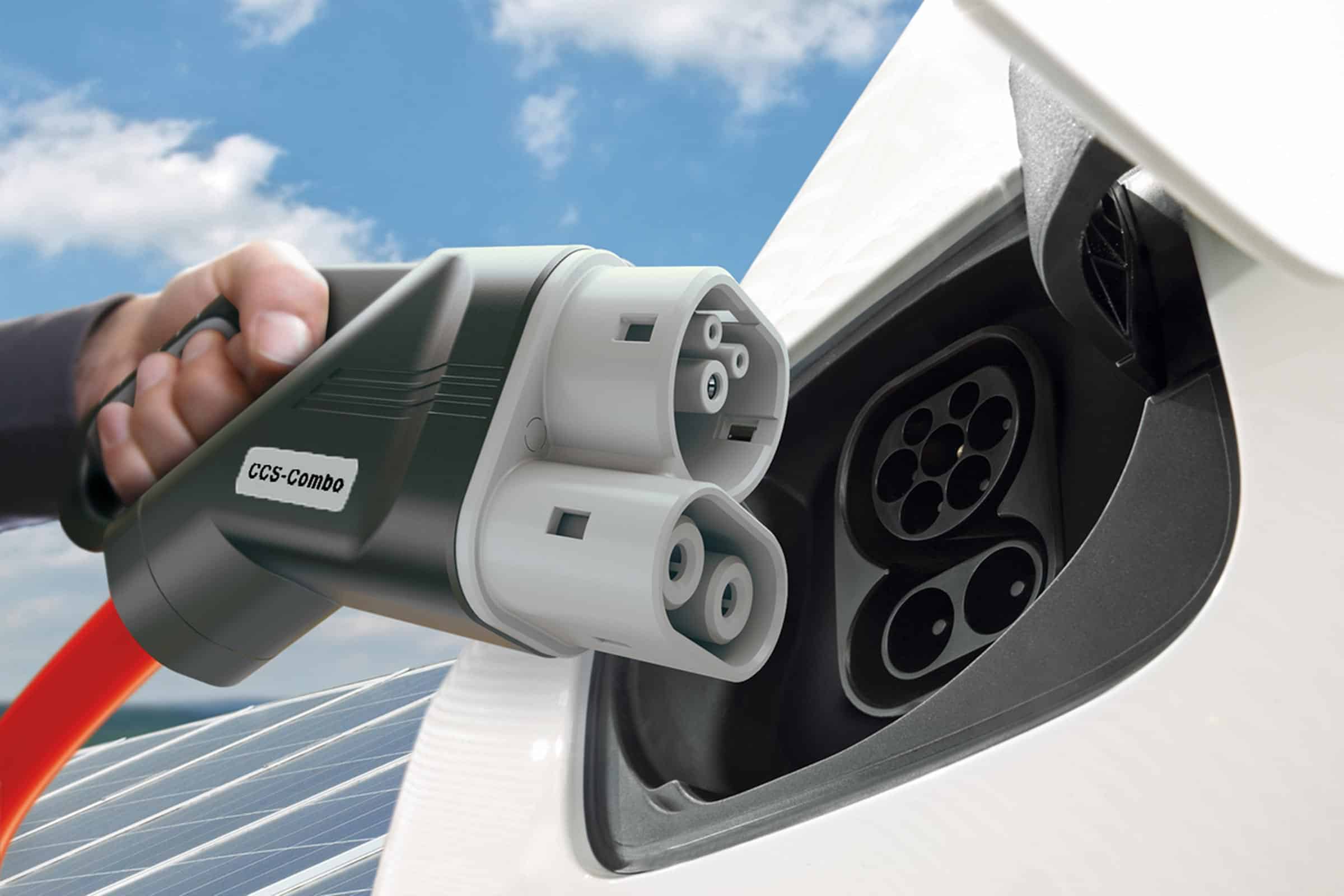
The EV charging process is explained in detail
Let’s delve deeper into the EV charging process, focusing on the technical aspects and considerations:
- Initiation: The user plugs the appropriate charging cable into the charging station and their EV. The charging station and the vehicle then initiate communication.
- Authentication and authorisation: For public charging stations, users may need to authenticate themselves using an RFID card, a mobile app, or a contactless payment method. This ensures that the charging session is authorised and can be billed correctly.
- Voltage and current negotiation: The EV communicates its maximum charging rate and voltage requirements to the charging station. The charging station responds with the available power and current it can supply. The system then negotiates a safe and optimal charging rate.
- Power conversion (if applicable): The alternating current from the grid enters the EV’s onboard charger for AC charging. This sophisticated electronic device converts the AC power into the direct current (DC) that the lithium-ion battery requires. The onboard charger also regulates the voltage and current flowing into the battery.
- Direct DC delivery (for DC fast charging): AC-to-DC conversion happens within the charging station in DC fast charging. The station then delivers high-power DC directly to the EV’s battery, bypassing the onboard charger. This is why DC fast charging is significantly quicker.
- Battery Management System (BMS) Control: The EV’s BMS plays a crucial role throughout the charging process. It constantly monitors the battery’s voltage, current, temperature, and state of charge. The BMS communicates with the charging station and the onboard charger (if applicable) to ensure the battery is charged safely and efficiently, preventing overcharging or overheating.
- Charging termination: Once the battery reaches the pre-set charging limit (e.g., 80% for faster charging or 100% for a full charge), the BMS signals the charging station to stop the power flow. The user can then unplug the vehicle.
How long does it take to charge an EV using solar power?
Charging your EV using solar energy depends on your solar system size, battery capacity, EV model, and charger type.
Here’s a rough guide:
- Level 1 charger (10A plug): 8–24 hours (slow and inefficient)
- Level 2 charger (7kW–22kW): 3–8 hours for most EVs
- Using solar only (5–10kW system):
- Full sun hours: 5–6
- Charging time: 6–10 hours, depending on system output and EV battery size
Tips for faster solar EV charging:
- Charge during peak solar production (10 am–3 pm)
- Use a smart charger to sync with solar output
- Add a solar battery to store excess solar and charge overnight
Key considerations for EV charging
Several factors influence how EV chargers work and the overall charging experience in Australia:
- Charging speed: As discussed, different charger types offer varying charging speeds. Choosing the right charger depends on the time available and the desired range.
- Charging infrastructure: Australia’s public charging network is continuously expanding, with more charging stations installed in urban areas, along major highways, and in regional locations. However, availability and accessibility can still vary. As of early 2025, there are over 5,000 public EV charging points across Australia, with significant growth projected in the coming years thanks to government initiatives and private investment.
- Charging costs: Charging an EV varies depending on the location and the charging provider. Home charging is generally the cheapest, especially when combined with solar power. Public charging costs can vary, with some providers offering per-kWh rates or flat fees for charging sessions.
- Grid stability and renewable energy integration: Australia’s electricity grid is evolving to accommodate the increasing demand from EVs. Integrating renewable energy sources like solar and wind power with EV charging infrastructure is a key focus for a sustainable transportation future. Smart charging technologies are also being explored, optimising charging times based on grid load and renewable energy availability.
- EV range and battery capacity: The range of an EV on a single charge and the capacity of its battery directly impact charging frequency and the time required to replenish the battery. Newer EVs generally offer longer ranges, reducing the need for frequent charging stops. The average battery capacity of new EVs sold in Australia in 2024 was around 65 kWh, offering a real-world range of approximately 350-450 kilometres.
- Charging management systems: Many EV owners utilise mobile apps and online platforms provided by charging networks to locate available chargers, monitor charging sessions, and manage payments. These systems enhance the convenience of public charging.
Environmental impact and sustainability
Transitioning to EVs and understanding how EV chargers work contribute to environmental sustainability.
Benefits of EV chargers
- Reduced emissions: EVs produce zero tailpipe emissions, improving air quality.
- Renewable integration: Charging with renewable energy sources further decreases the carbon footprint.
- Energy efficiency: EVs convert a higher percentage of electrical energy into motion compared to internal combustion engines.
Installation and maintenance of EV chargers
Proper installation and maintenance are crucial for EV chargers’ safe and efficient operation.
Installation considerations:
- Professional installation: Engage licensed electricians familiar with EVSE installations.
- Site assessment: Evaluate electrical capacity and determine optimal charger placement.
- Compliance: Adhere to local regulations and obtain necessary permits.
Maintenance tips
- Regular inspections: Check for wear and tear, and ensure connections are secure.
- Software updates: Keep the charger firmware up to date to benefit from the latest features and security enhancements.
- Cleaning: Maintain cleanliness to prevent dust and debris from affecting performance.
Future trends in electric car charging systems
The technology behind electric car charging systems is constantly evolving. Some key future trends include:
Faster charging technologies
Research and development are focused on further charging speeds, with the potential for ultra-fast chargers capable of adding hundreds of kilometres of range in just minutes.
Wireless charging
Inductive or wireless charging technologies are being explored, offering a more convenient charging experience without cables.
Standardisation and interoperability
Continued efforts towards standardising charging connectors, protocols, and payment systems will improve the user experience and ensure seamless interoperability across different charging networks.
Bidirectional chargers – V2G & V2H explained
Bidirectional chargers are revolutionising how we interact with vehicles and the power grid. These chargers enable energy to flow both ways—charging your EV and then discharging stored energy back into your home or the grid.
V2G – Vehicle-to-Grid
- Allows your EV battery to export energy to the grid
- Helps stabilise the national grid and support renewable energy integration
- Potential to earn feed-in credits or reduce electricity bills
V2H – Vehicle-to-Home
- Powers your home using your EV battery during peak demand or blackouts
- Acts like a mobile solar battery
- Reduces grid dependency and boosts energy security
The rise of smart EV chargers
Smart EV chargers do not simply deliver electricity but allow real-time monitoring, scheduling, and load balancing. They’re designed to work in sync with solar systems and even home energy management platforms.
Key features of smart EV chargers
- App-based control for remote monitoring and scheduling
- Integration with rooftop solar systems for self-sufficient charging
- Dynamic load management to protect your home’s electrical system
- Time-of-use optimisation, reducing costs by charging during off-peak hours
Ready to take the next step in your EV journey?
Energy Matters connects you with trusted local installers and the best solar-integrated solutions. Explore Energy Matters’ range of EV charging solutions and find the perfect fit. Discover how much you can save—get your free EV charging quote today and start driving smarter.














